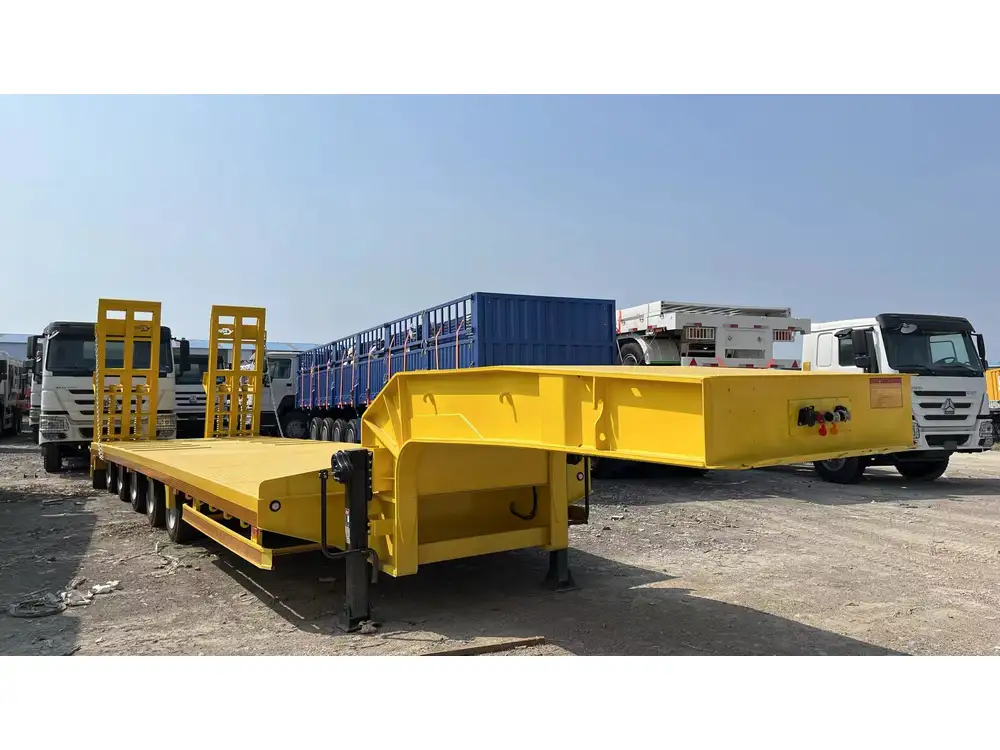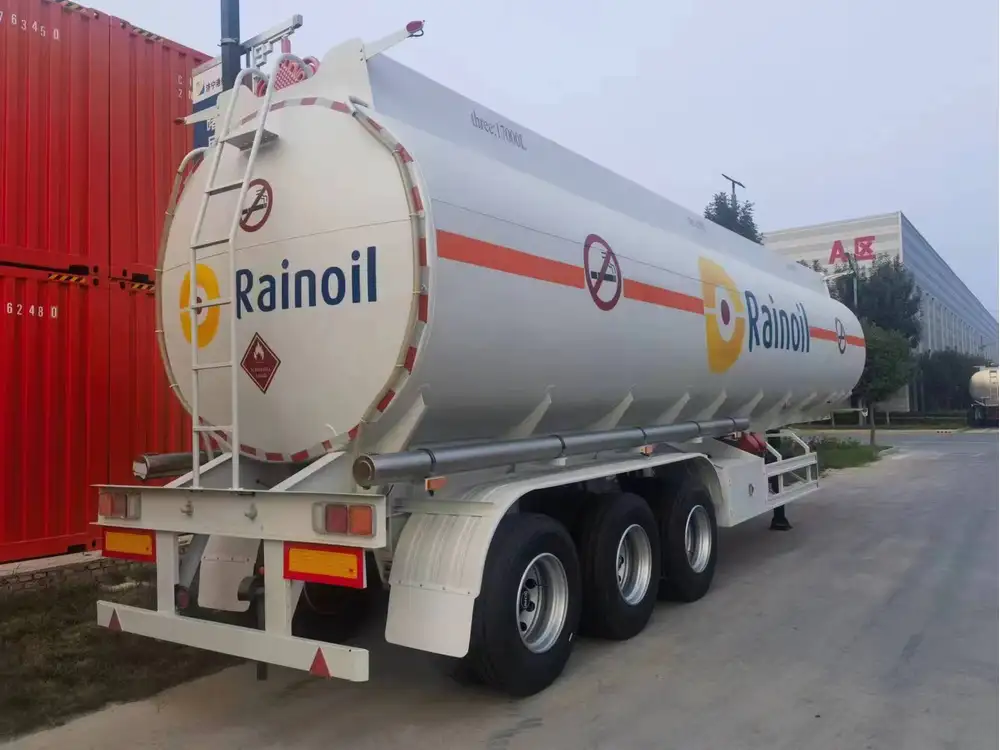Introduction
In the world of logistics and transportation, efficiency is paramount. As a manufacturer of semi-trailers, we understand the critical role that equipment plays in optimizing delivery systems. Among various types of trailers designed for specific cargo demands, the 40 ft skeleton trailer stands out due to its versatility and efficiency. This article aims to elucidate the intricacies of 40 ft skeleton trailers, covering their specifications, benefits, and specific applications. Our goal is to empower decision-makers in the transport industry to make informed choices that align with their operational needs.
What is a 40 ft Skeleton Trailer?
A 40 ft skeleton trailer, often referred to simply as a skeleton chassis, is primarily used for transporting containers. This specialized semi-trailer design allows for the efficient movement of standard ISO containers, specifically the 20 ft, 40 ft, and 45 ft variants. Its open structure—consisting of a minimal frame without a solid base—maximizes the loading area while minimizing the weight of the trailer itself.

Key Specifications
The specifications of a 40 ft skeleton trailer are critical for understanding its application and capabilities. Below is a detailed breakdown of typical specifications that define a standard model:
| Feature | Description |
|---|---|
| Overall Length | 40 feet |
| Width | 8.5 feet (102 inches) |
| Height | Approximately 1.3 feet |
| Weight Capacity | Up to 30,000 kg (66,138 lbs) |
| Tare Weight | 4,500 kg (9,920 lbs) |
| Axle Configuration | Tandem (2 axles) |
| Suspension Type | Air Ride or Leaf Spring |
| Material | High-strength steel or aluminum |
| Braking System | Pneumatic or hydraulic |
| Paint Finish | Corrosion-resistant coating |
Structural Design
The design of the skeleton trailer incorporates longitudinal beams and cross members, creating a sturdy yet lightweight frame capable of supporting significant loads. This design ensures balance during transit, reducing the risk of damage to the cargo, particularly in the case of high-value containers.
Benefits of Using a 40 ft Skeleton Trailer
Utilizing a 40 ft skeleton trailer presents various advantages for shipping and logistics companies. Below are some of the prominent benefits:

1. Improved Fuel Efficiency
With their lightweight design, skeleton trailers reduce overall transport weight, translating into lower fuel consumption. For fleet operators, this results in significantly decreased operational costs, which can enhance profit margins.
2. Versatile Cargo Handling
The open-frame structure of the skeleton trailer allows for easy loading and unloading of different container sizes. This flexibility is especially useful in environments where containers vary in size, enabling operators to accommodate varying client needs without requiring multiple trailer types.
3. Increased Durability and Longevity
Constructed from high-strength materials such as steel or aluminum, 40 ft skeleton trailers are built to withstand the rigors of transportation. Their robust design combats wear and tear, ensuring that assets remain functional for longer, thus lowering replacement costs in the long run.

4. Enhanced Maneuverability
The lightweight design combined with a well-balanced structure enhances maneuverability, allowing drivers to navigate through tight locations, urban environments, or crowded ports with relative ease. This contributes to improved delivery times and overall efficiency in logistics operations.
5. Better Safety Features
Advanced safety features—including pneumatic braking systems and LED lighting—are often integrated into modern 40 ft skeleton trailers. These features enhance visibility and stopping power, crucial for safe transportation, especially in challenging weather conditions or sudden traffic situations.
Applications of 40 ft Skeleton Trailers
The versatility of 40 ft skeleton trailers means they are used across various sectors. Their applications include but are not limited to:

Container Transport
Predominantly, these trailers transport standard ISO shipping containers. Their ability to efficiently handle a range of container sizes makes them essential for international shipping and freight transport.
Intermodal Freight Solutions
Skeleton trailers are integral to intermodal transport networks, facilitating seamless transfers between different transport modes—road, rail, and sea. This capability is vital for global trade, allowing cargo to be moved efficiently across different transportation infrastructures.
Heavy Equipment Hauling
In addition to containers, 40 ft skeleton trailers can be adapted for transporting heavy machinery or oversized loads. Their strength and lightweight construct provide the necessary support needed without exceeding weight limits imposed by regulations.

Manufacturing and Industrial Supply Chains
Manufacturers often utilize skeleton trailers for just-in-time deliveries, particularly in assembly and production lines. Their ability to facilitate fast-loading and unloading aids in maintaining streamlined production operations.
Choosing the Right 40 ft Skeleton Trailer
Selecting the right skeleton trailer hinges on multiple factors, including the intended use, required payload capacity, and specific features tailored to operational demands. Here are essential considerations for potential buyers:
Payload Capacity
Evaluate the maximum weight your operations usually transport. Since skeleton trailers come with various weight ratings, choosing one that meets your regular cargo requirements without exceeding weight limits is crucial.

Structural Integrity
Inspect the material and construction of the trailer. High-strength steel constructions will typically offer better durability, while aluminum options might be lighter but could compromise some load-handling capabilities.
Suspension System
Consider the type of suspension system that best suits your handling requirements. Air ride systems provide a smoother ride, reducing wear on cargo compared to traditional leaf spring systems.
Additional Features
Examine the trailer for value-added features such as adjustable twist locks for secure container placement, integrated storage compartments, or enhanced lighting and visibility features for night operations.

Maintenance and Care for 40 ft Skeleton Trailers
Ongoing maintenance is vital to ensure your 40 ft skeleton trailer remains operational and safe. Here is a structured guide on maintenance practices:
Regular Inspections
- Visual Assessment: Regularly examine the trailer for signs of wear, rust, or damage to the structural frame.
- Tires and Brakes: Check tire pressure and tread depth, as well as inspect brake systems for proper functionality.
Cleaning
- Routine Cleaning: Keep the trailer clean of debris, dirt, and grime to prevent corrosion. A clean trailer enhances not only safety but also the longevity of the equipment.

Service
- Professional Check-ups: Schedule regular professional inspections to ensure that all mechanical components function optimally.
Lubrication
- Moving Parts: Ensure that moving parts, such as hinges and axles, are adequately lubricated to reduce friction and wear.
Conclusion
In an industry where adaptability, efficiency, and safety are non-negotiable, the 40 ft skeleton trailer serves as a pivotal asset that enhances logistical operations. Its lightweight design, robust structure, and versatile applications make it an optimal choice for transporting containers and facilitating intermodal freight solutions. As manufacturers, we recognize the importance of providing high-quality skeleton trailers that meet the rigorous demands of the transport industry.
By investing in a 40 ft skeleton trailer, companies can not only optimize their logistics processes but also stand resilient against the dynamic challenges of global trade. With the right specifications, proper maintenance, and informed selection, fleet operators can elevate their operational capabilities and achieve substantial cost savings and efficiency improvements.
Understanding these multifaceted aspects equips decision-makers with insight into harnessing the full potential of their freight transport systems, leading to lasting benefits in an ever-evolving marketplace.



